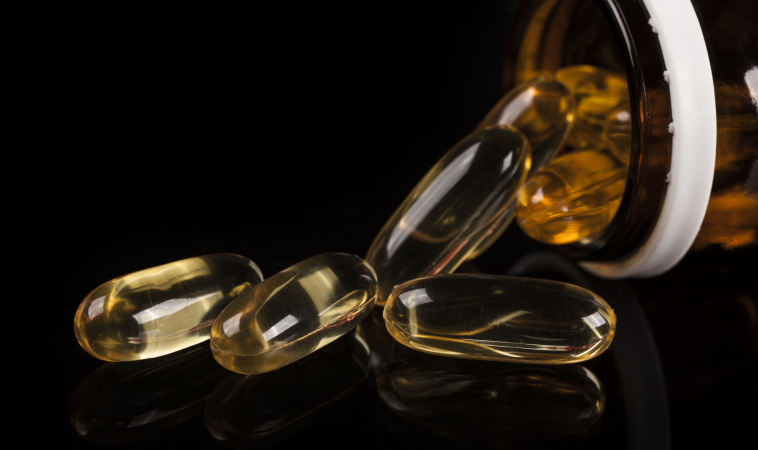In Part I of this series, I discussed the concerns and caveats I had with prescribing vitamin D based on current study conclusions and measurements. In part II, I will go on to further detail a review on the caveats of prescribing vitamin D for conditions solely based on associations with higher levels of this nutrient and conclude with some suggestions for patients and doctors on prescribing and taking vitamin D.
A beautiful review I found explains the concerns I have with prescribing vitamin D treatment based on associations or inconsistent studies relating it with health outcomes. I’ve extracted some of the researchers’ conclusions on these various conditions. I’ve also included my comments below some of these excerpts.1
The overall bottom line is that the authors recommendations of supplementation err on the side of caution.
Diabetes
… in the recent large study by Pittas et al., the lower incidence of type 2 diabetes mellitus in the highest versus the lowest vitamin D status group was reported. However, several trials found no effect of vitamin D supplementation on glycemia or incidence of T2DM. Potential reasons of this inconsistency include various vitamin D baseline levels, different doses used in supplements, and also differences in study designs [24, 25].
All these associations are important for understanding the etiology of abnormal glucose metabolism, but further studies are necessary to confirm the independent vitamin D role in reduction of the risk of type 2 diabetes mellitus.1
Cardiovascular Health
Apart from the role in the regulation of renin expression, vitamin D and its analogues exert also their direct effect on the function and structure of the vascular wall [22]. It results from their anti-adhesive, anti-inflammatory and antioxidant activities. However, despite of numerous studies supporting this role of vitamin D3, there are some investigations that question its effect on vasodilation but indicate rather its activity leading to increased vascular resistance and increased sensitivity to factors that raise blood pressure [22].
Low concentration of serum calcium and hyperparathyroidism, that are secondary to low levels of vitamin D3, are considered as other mechanisms which play an important role in the pathogenesis of cardiovascular disease. Low level of calcium negatively affects vascular smooth muscle tension, and is regarded as a potential pathogenic factor of hypertension. What is more, high parathyroid hormone level, resulting from deficiency of vitamin D3, has proven adverse effects on the vascular…1
This excerpt is a little tough if you don’t have a doctorate. Here is a summary for you in English: some studies say vitamin D may cause a raise in blood pressure. However, others are showing adverse effects on vasculature with a deficiency in it. This means the evidence is conflicting and the doctor must assess the need for supporting levels based on the patient’s presentation.
Obesity
There is also another mechanism that may contribute to the link between obesity on one side and hypertension and insulin resistance on the other. Low levels of vitamin D3 may be related to obesity. Increased body fat tissue mass binds vitamin D3, which is soluble in fats, what results in its sequestration and reduction of bioavailability [22].
There are a lot of data from intervention and epidemiologic studies that evaluated the impact of vitamin D3 supplementation on cardiovascular risk. Although the most researchers suggest a negative effect of vitamin D3 deficiency on the morphology and function of peripheral vessels, it may be presumed that vitamin D3 deficiency can also be secondary to vascular pathology resulting from immobility and low exposure to sunlight [22].1
I must chime in here as well. I’ve been concerned about this for ages. Practitioners are giving vitamin D to obese patients like (gluten-free, xylitol sweetened, prebiotic enriched) gummies without accounting for the fact that their vitamin D is being stored in their fat. This could be why it’s low in their blood (serum)!
For example, in a recent study the authors believed that 25(0H)D may be suppressed in obesity due enhanced 1,25(OH)2D feedback. They state the following as well, “It has also been suggested that the metabolic clearance of vitamin D may increase in obesity, possibly with enhanced uptake by adipose tissue (2).”2
A fat-soluble vitamin at high doses over years can have the potential to build up in the tissues. What’s the results? We don’t know yet!3That’s a little too risky in my book.
Deficiency Conditions
Nowadays, vitamin D deficiency is considered a pandemic because it affects all age groups in almost all geographical regions. It was shown that the percentage of people diagnosed with low levels of 25(OH)D levels doubled in the period of 1994-2004 [12]. This situation is the result of changes in lifestyle of modern societies that involve decrease in time spent outdoors, the widespread use of sunscreens, and also air pollution. All these factors contribute to insufficient exposure to sunlight, and thus reduced skin synthesis of vitamin D. Other factors that probably increase the risk of deficiency of this vitamin are: aging of populations and the resulting decline of vitamin D synthesis in the skin, low intake of vitamin D with the diet, and the obesity epidemic [9].
It is assumed that a well-balanced diet should provide all the essential nutrients, minerals and vitamins. However, there are groups of people who are particularly vulnerable to deficiency of vitamin D, e.g. children, adolescents, pregnant and nursing women and the elderly. The supplements should be used when sun exposure and the diet are not able to cover the needs of the organism.1
I will comment on this as well. You’ll notice the caveats of supplementation, “The supplements should be used when sun exposure and the diet are not able to cover the needs of the organism.”1
Therefore, I agree with the experts stating that sunlight and diet is optimal for vitamin D support. Furthermore, sunlight has benefits beyond vitamin D. These include influencing serotonin and melatonin levels, circadian rhythm, immune markers (alpha melanocyte-stimulating hormone (α-MSH), calcitonin gene-related peptide (CGRP), neuropeptide substance P), and endorphins.4,5
What About Pregnancy?
A 2012 review and meta-analysis assessed five randomised trials with outcomes related to pregnancy. However, the authors noted that the “small sample size and dosage amount, duration and frequency varied as did the ability to correct deficiency” making determination of efficacy challenging. The article states:
The fat soluble properties of vitamin D mean that intermittent (e.g. weekly or monthly) dosage is possible, which may be particularly useful in countries with weak health infrastructure, but also raises the need to consider potential adverse effects due to toxicity. The upper limit of intake above which adverse health outcomes such as hypercalcaemia during pregnancy ensue is uncertain. The US tolerable upper limit for women of reproductive age including pregnant women was recently set at 4000 IU/day though it has been argued that there is little evidence of toxicity of higher levels up to 10,000 IU/day.33 Dosages administered during recent trials without adverse effects include daily provision of up to 4,000 IU/day vitamin D3 throughout pregnancy in the trial from South Carolina5 (though women with high baseline serum levels were excluded from the highest dose group and supplementation began at 16 weeks), provision of a weekly dose of 35,000 IU D3 during the third trimester in Bangladesh87, and one time doses of 200,000 IU vitamin D3 in the third trimester of pregnancy,42, 51 Monitoring of adverse events in clinical trials using high intermittent dosing may also be an important consideration.885
One review assessed U-shaped associations looking for when the dosage of vitamin D decreased in benefit and increased in negative outcomes. They again concluded that more studies are needed for ruling out confounders and using better controlled studies:
Several reports describe U-shaped 25-hydroxyvitamin D [25(OH)D] concentration–health outcomes, including musculo-skeletal disorders such as falls and fractures, several cancers, cardiovascular disease (CVD), cognitive function, all-cause mortality rates, birth outcomes, allergic reactions, frailty, and some other disorders. This paper reviews reports of U-shaped outcome associations with vitamin D status for evidence of underlying pathophysiological processes, or of confounding, finding that some U-shaped associations appear to be biologically meaningful, but that many could well reflect confounding by factors such as lifestyle, or hypovitaminosis D-related disease onset being masked by self-supplementation that was begun too late to correct developing health problems but before baseline vitamin D status assessment. However, the various U-shaped associations for allergic reactions may be due to vitamin D modulation of the phenotype of the immune response, shifting the Th1-Th2 balance toward Th2 formation. For prostate cancer, there seems to be little effect of 25(OH)D concentration on incidence; however, there is an inverse correlation between 25(OH)D concentration and mortality rates. Future observational studies, and randomized controlled trial data analyses, should include adjustment for data collected on prior long-term vitamin D supplementation and solar UVB exposure, as well as other potential confounders.6
Do I Suggest Vitamin D in My Practice?
You may be surprised to learn that I do in fact suggest vitamin D to some of my clients, some of the time. I use laboratory measurements, symptoms, and look for potential causes of insufficiency before I recommend supplementation. For example, I’m especially cautious in using high levels long-term in obese individuals. This is especially true if they are losing weight and potentially releasing this vitamin-hormone into the bloodstream.
I also consider the factors that influence vitamin D levels such as race, intake, weight, age, physical activity, vitamin D receptor variants and response, dietary calcium, sunshine exposure, liver and kidney function, and absorption.7-15
I also consider toxic exposure. One recent study found that lead toxicity caused alterations in bone cell function and 1,25-dihydroxyvitamin D3 in children.16
Plasma 1,25-dihydroxyvitamin D3 levels in lead intoxicated children were reduced to levels comparable to those of patients with metabolic bone disease, uremia, and hypothyroidism. However, after chelation therapy plasma 1,25-dihydroxyvitamin D3 levels returned to normal.
A previous study reported on similar mechanisms in adults.17 In another article, researchers found that levels of urinary BPH was linked to lower vitamin D.18
Therefore, I am concerned with any intervention, no matter how wonderful it seems, being used by everyone. This to me goes against holism and treating the individual.
I am not saying don’t use vitamin D, I’m saying, let’s not all jump on the bandwagon based on popularity and associations.
Doctors, I plea to you, go back to truly listening and assessing everyone as a unique and precious person with differing needs. Treat the person, not the numbers.
Patients and clients, be proactive in your health and provide feedback on what and will not work with your beliefs and in treating your own body. Don’t just take something to take it, ask why.
 Sarah Lobisco, ND, is a graduate of the University of Bridgeport’s College of Naturopathic Medicine (UBCNM). She is licensed in Vermont as a naturopathic doctor and holds a Bachelor of Psychology from State University of New York at Geneseo. Dr. LoBisco speaks professionally on integrative medical topics, has several journal publications, and has completed her postdoctoral training as a certified functional medicine practitioner. Dr. LoBisco currently incorporates her training in holistic medical practices and conventional medicine through writing, researching, private wellness consultations, and through her independent contracting work for companies regarding supplements, nutraceuticals, essential oils, and medical foods. Dr. LoBisco also enjoys continuing to educate and empower her readers through her blogs and social media. Her recent blogs about living naturally in our complex world and on the applications of essential oils can be found at www.dr-lobisco.com and at www.saratoga.com/living-well. Her new book BreakFree Medicine is now available on Amazon and Barnes & Noble’s. More information can be found at http://dr-lobisco.com/dr-sarah-lobisco-breakfree-medicine/
Sarah Lobisco, ND, is a graduate of the University of Bridgeport’s College of Naturopathic Medicine (UBCNM). She is licensed in Vermont as a naturopathic doctor and holds a Bachelor of Psychology from State University of New York at Geneseo. Dr. LoBisco speaks professionally on integrative medical topics, has several journal publications, and has completed her postdoctoral training as a certified functional medicine practitioner. Dr. LoBisco currently incorporates her training in holistic medical practices and conventional medicine through writing, researching, private wellness consultations, and through her independent contracting work for companies regarding supplements, nutraceuticals, essential oils, and medical foods. Dr. LoBisco also enjoys continuing to educate and empower her readers through her blogs and social media. Her recent blogs about living naturally in our complex world and on the applications of essential oils can be found at www.dr-lobisco.com and at www.saratoga.com/living-well. Her new book BreakFree Medicine is now available on Amazon and Barnes & Noble’s. More information can be found at http://dr-lobisco.com/dr-sarah-lobisco-breakfree-medicine/
References:
- Wranicz J, Szostak-Węgierek D. Health outcomes of vitamin D. Part II. Role in prevention of diseases. Rocz Panstw Zakl Hig. 2014;65(4):273-9
- S. Vimaleswaran et al. Causal relationship between obesity and vitamin D Status: Bi-directional Mendelian randomization analysis of multiple cohorts. PLoS Medicine. February 2013. doi:10.1371/journal.pmed.1001383
- Vanlint S. Vitamin D and Obesity. Nutrients. 2013;5(3):949-956. doi:10.3390/nu5030949.
- Mead MN. Benefits of Sunlight: A Bright Spot for Human Health. Environmental Health Perspectives. 2008;116(4):A160-A167.
- Thorne-Lyman A, Fawzi WW. Vitamin D during pregnancy and maternal, neonatal and infant health outcomes: a systematic review and meta-analysis. Paediatric and perinatal epidemiology. 2012;26(0 1):10.1111/j.1365-3016.2012.01283.x. doi:10.1111/j.1365-3016.2012.01283.x.
- William B. Grant, Spyridon N. Karras, Heike A. Bischoff-Ferrari, Cedric Annweiler, Barbara J. Boucher, Asta Juzeniene, Cedric F. Garland, and Michael F. Holick. Do studies reporting ‘U’-shaped serum 25-hydroxyvitamin D–health outcome relationships reflect adverse effects? Dermato-Endocrinology. 2016; 8(1).
- Linus Pauling Institute. Vitamin D. Micronutrient Information Center. Oregon State University Web Site. Available at: http://lpi.oregonstate.edu/mic/vitamins/vitamin-D. Accessed October 31, 2016.
- National Institute of Health Office of Dietary Supplements. Vitamin D: Fact Sheet for Health Professionals. U.S. Department of Health and Human Services Web Site. Available at: https://ods.od.nih.gov/factsheets/VitaminD-HealthProfessional/
- Vitamin D. Examine.com Web Site. Available at: https://examine.com/supplements/vitamin-d/#ref45. Accessed October 31, 2016.
- Mossin M, Aaby JB, Dalgard C, Lykkedegn S, Christsen H, Bilenberg N. Inverse associations between cord vitamin D and attention deficit hyperactivity disorder symptoms: A child cohort study. Aust N Z J Psychiatr. September 30, 2016; 0004867416670013.
- Genetics and receptor interaction with Crohn’s: Wang T-T, Dabbas B, Laperriere D, et al. Direct and Indirect Induction by 1,25-Dihydroxyvitamin D3 of the NOD2/CARD15-Defensin β2 Innate Immune Pathway Defective in Crohn Disease. The Journal of Biological Chemistry. 2010;285(4):2227-2231. doi:10.1074/jbc.C109.071225.
- and Lynnette R. Ferguson Carvalho A, Bishop KS, Yeo Han D, Elett S, Jesuthasan A, Lam W, Ferguson L. The Role of Vitamin D Level and Related Single Nucleotide Polymorphisms in Crohn’s Disease. Nutrients 2013, 5(10), 3898-3909; doi:3390/nu5103898
- Janssen HCJP, Samson MM, Verhaar H. Vitamin D deficiency, muscle function, and falls in elderly people. 2002. http://ajcn.nutrition.org/content/75/4/611.fullMadureira MM, Takayama L, Gallinaro AL, Caparbo VF, Costa RA, Pereira RMR. Balance training program is highly effective in improving functional status and reducing the risk of falls in elderly women with osteoporosis: a randomized controlled trial. Osteoporosis International. 2007;18(4):419-425. doi:10.1007/s00198-006-0252-5.
- Theiler R, Stähelin HB, Kränzlin M, et al. Influence of physical mobility and season on 25-hydroxyvitamin D–parathyroid hormone interaction and bone remodelling in the elderly. Eur J Endocrinol 2000;143:673–9
- Bouassida A, Latiri I, Bouassida S, et al. Parathyroid Hormone and Physical Exercise: a Brief Review. Journal of Sports Science & Medicine. 2006;5(3):367-374.
- Pounds JG, Long GJ, Rosen JF. Cellular and molecular toxicity of lead in bone. Environmental Health Perspectives. 1991;91:17-32.
- Khalil N, Cauley JA, Wilson JW, et al. Relationship of Blood Lead Levels to Incident Nonspine Fractures and Falls in Older Women: The Study of Osteoporotic Fractures. Journal of Bone and Mineral Research. 2008;23(9):1417-1425. doi:10.1359/JBMR.080404.
- Johns LE, Ferguson KK, Meeker J. Relationships Between Urinary Phthalate Metabolite and Bisphenol A Concentrations and Vitamin D Levels in U.S. Adults: National Health and Nutrition Examination Survey (NHANES), 2005–2010 (abstract). Journal of Clinical Endocrinology and Metabolism (online). September 30, 2016.


















What a revealing article on Vitamin D and the pros and cons to taking it as a supplement or for certain ailments.
I do agree, just don’t take anyone’s simple word that a thing is good, study first before doing or trying.